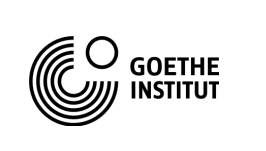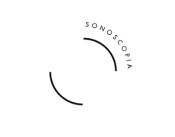SONS CIRCULANTES | Moinho de Apelação
Eunice Artur, Jutta Ravenna and Nuno Torres
PERFORMANCE
19 August 2023 ► 7pm to 8pm
Cordial invitation to the audiovisual LIVE performance “Sons Circulantes” with Eunice Artur (PT), Nuno Torres (PT) and the Berlin-based sound artist Jutta Ravenna on Saturday, 19 August 2023 from 7 to 8 p.m. at the Moinho de Apelação.
Close to the airport of Lisbon, embedded in its specific acoustic environment of moving airplanes in the sky, an audiovisual performance will take place at and in the Apelação windmill. Due to its rotating blades, the windmill could be interpreted as a kinetic sound object. The windmill as a sound source is oscillating between stability and instability according to the wind energy within several “acoustic resonators”: oscillating buzios and jarras in space tuned to different frequencies. In an electroacoustic and instrumental LIVE Performance, the immersive sound space inside and outside the mill will be enriched by the sonic intervention of the Duo Nuno Torres (alto saxophone and electronics) and Jutta Ravenna (Leslie Speakers). In an audiovisual performance, artist Eunice Artur will use the mechanics inside the mill to create a “partitura” (a score) in direct contact with metric movements and vibrations of the millstone.
Afterwards, visitors will have the opportunity to speak with the artists personally in an artist talk.
How to go there: GPS: 38.81538463294732, -9.128078756245191

Details
Sounding windmills of Portugal
In collaboration with the University of Lusófona in Lisbon, a series of sound recordings of various historic sounding windmills was already made in the run-up to the concert with the aim of programming a sound map: in Montejunto, Bordhineira, Sobral de Monte Agraço, Madeira, Turquel, Apelação in Lisbon, Catefica and the Vale de Pinhoa. More recordings will follow for completeness.
A sound art project in cooperation with the Lusófona University
The use of wind energy as natural, sustainable technology has a long tradition in Portugal. About 3000 windmills were still in operation and played an important role in the agriculturally oriented economy of the country in the mid-1960s. In addition to their functional purpose, rotating windmill blades produce sound. Their audible aesthetic peculiarity consists first of all of the spatial sound resulting from the interaction of the pure wind with the surface of the blades in the landscape. In addition, numerous Portuguese windmills in the southwestern coastal strip are equipped with approximately 50 resonating bodies, tuned in different frequencies, which are mounted on the windmill blades of each such windmill. There are different types of sound vessels: “buzinas “(buzzers), “canudas” (double flutes) and “jarras” (vases), made of clay jars, conch shells, reeds, cane, or tin cans.
Windmills have in the meantime been declared cultural heritage, and as such are not only put under protection but also, in order to escape the fate of becoming a pure monument of the past times, their presence and visibility call for new, responsible yet challenging concepts and a constant rethinking of relationships between the past and present. Only by reflecting upon this from different perspectives, a necessary amount of ideas and diverse approaches can collect over time and generate further cultural values.
The project Circulating Sounds focuses on the sonic aspects of these mills in order to research and document changing, rotating sounds in the landscape and urban context. This will be done in an ongoing participatory process through a sound map. The audio data of the historical windmills will be directly used to generate an interactive map, produce sound installations and audio walks, as well as to enable knowledge transfer in workshops. Furthermore, the database will provide a valuable foundation for further artistic and scientific research, production of cultural content.
The Windmills Sound Map is conceived as an interactive platform that has future potential as a permanently expandable basis. Technically, a sound map is a digital interface that embeds a variety of audio recordings into a kind of audible geographical structure. This is how the sound map works: as soon as the user clicks on a symbol on the interactive map of Portugal, she or he immediately will hear the corresponding location-specific sound of a windmill.
Participating Artists
Nuno Torres
Born in 1977 in Lisbon, Nuno Torres is a musician and sound artist who completed his Master’s degree in Music at the FCSH of the Universidade Nova de Lisboa. He is a member of the Contemporary Music Research Group at the Centre for Studies in Sociology and Musical Aesthetics. He studied music at the Hot Clube de Portugal in saxophone. He is currently an assistant professor at the College in Caldas da Rainha.
Torres is developing a career in saxophone research, focusing on the exploration of a wide range of sound material through the use of “extended techniques” and electroacoustics. He participates in and promotes several new media and network music projects. Recently he has been involved in works in the field of sound art. He participates in several ensembles for improvised, experimental and reductionist music. In addition to international concerts, discography of several titles released mainly on Creative Sources and Clean Feed.
http://nunotorres.net/
https://nunotorres.bandcamp.com/music
Eunice Artur
Eunice Artur (Portugal, 1981) is a visual artist and performer. Studied contemporary art at the University of Aveiro with the research project “Nomadic wandering – drawing as a re-encounter with a place”.
Her research includes drawing, photography, video, sculpture, installation, sound and performance. She often collaborates with musicians, resulting in performances that explore the relationship and fusion of sound and drawing through the world of graphic notation. Her work has been exhibited in Portugal, Spain, France, Italy, Greece, the UK and Canada.
She takes the spatial drawing as a living organism that vibrates in different forms and forms a moving body. What emerges from this?
Jutta Ravenna
Born in Düsseldorf, Germany, Ravenna studied visual arts and music in Düsseldorf and Berlin. As sound-artist, she works with kinetic objects. On the border between visual art and music, she researches intermodal perceptional qualities between acoustics and visual themes, mostly with site-specific installations.
Since 1994 examples of works in lakes, abandoned shipyards, a gelatine-factory, old churches and monasteries, radio stations and universities. Several shows in Germany and abroad, among others: Filmfestival São Paulo, Goethe Center Santa Cruz, Bolivia, Soundtower St. Pölten, DARB-1718 Cairo, Egypt, Sound Art Gallery SA))_Gallery Moscow, Festival for Music and Light Berlin, singuhr hoergalerie Berlin, Villa Contarini Padua, Deutsche Telekom Berlin, Akademie der Künste Berlin. Since 2016 she is member of Errant Sound.
Ravenna was co-founder of the events “Klangkunst im Dialog” (1996) and curator of the Festival “Sonifications” 2017 at Berlin Society for New Music.
The sound art project “Circulating Sounds” is supported by:
Sonoscopia Associação Cultural, the Goethe Institute, the Lusófona University and the City of Camarate, Unhos e Apelação


